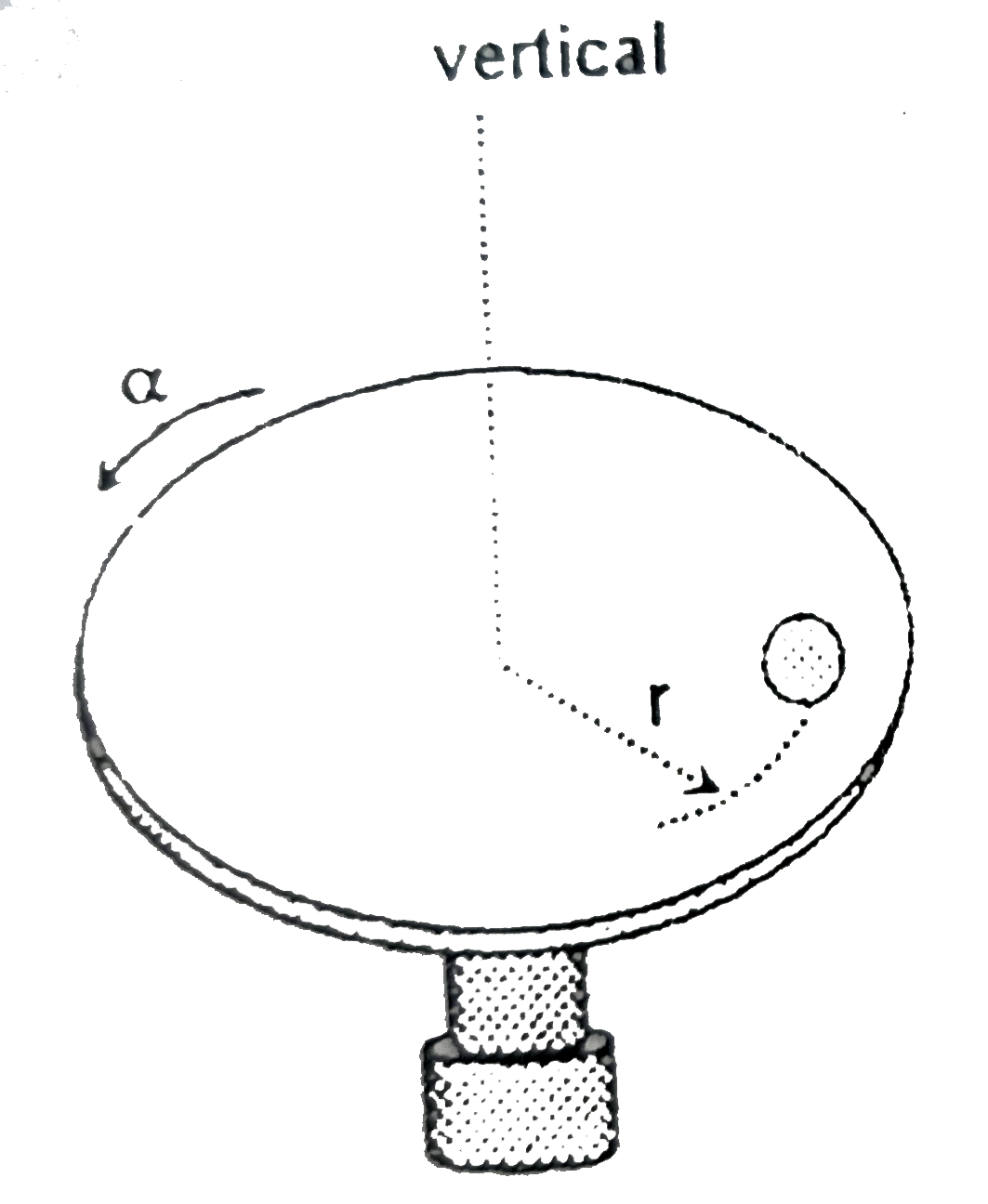A disc rotates about its aixs of symmetry in a horizontal plane at a steady rate of 3.5 revolutions per second A coin placed at a distance fo 1.25 cm form the axis of ratation remains at rest on the disc The coefficient of friction between the coin and the disc is : (g=10/s2)
0.5
0.7
0.3
0.6
The correct Answer is:D
Step by step video, text & image solution for A disc rotates about its aixs of symmetry in a horizontal plane at a steady rate of 3.5 revolutions per second A coin placed at a distance fo 1.25 cm form the axis of ratation remains at rest on the disc The coefficient of friction between the coin and the disc is : (g=10//s^(2)) by Physics experts to help you in doubts & scoring excellent marks in Class 12 exams.
Updated on:21/07/2023Topper's Solved these Questions
Similar Questions
A gramophone disc is set revolving in a horizontal plane at the rate of 3312 revolutions per minute. It is found that a small coin placed on the disc will remain there if its centre is not more than 5 cm from the axis of rotation. Calculate the coefficient of friction between the coin and the disc
[Hint : Centripetal force =mω2r= Frictional force =μN=μmg]
View SolutionA coin placed on a horizontal rotating disc, with its centre at 10 cm from the centre of the disc, is about to slip off when the disc performs 60 rpm. Find the coefficient of friction between the coin and the disc.
View Solution
Knowledge Check
A coin just remains on a disc rotating at a steady rate of 180r.p.m .A coin is kept at a distance of 2 cm from the axis of rotationn . The coefficient of fricition between the coin and the disc is _____ [gg=9.8m/s2]
A0.524B0.624C0.724D0.824A coin of 4 g mass is placed at a distance of 2 cm from the axis of rotation a disc,. If the frequancy of disc is 180 rpm, then the coefficient of friction between the coin at rest and disc will be
A0.07249B7.249C72.49D0.7250A circular disc is rotating about its own axis at the rate of 200 revolutions per minute. Two particles P,Q of disc are at distances 5cm,10cm from axis of rotation. The ratio of angular velocities of P and Q is
A1:2B1:1C2:1D4:1
A small coin is placed on a stationery horizontal disc at a distance r from its centre. The disc starts rotating about a fixed vertical axis through its centre with a constant angular acceleration α. Determine the number of revolutions N, accomplished by the disc before the coin starts slipping on the disc. Find the coefficient of static friction between the coin and the disc is μ9.

View SolutionA horizontal disc is oscillating in its own plane harmonically with amplitude a and period T. A body placed on the disc is about to slip on it. What is the coefficient of friction between the disc and the body?
View SolutionA disc rotates about its axis with a constant angular acceleration of 4rads2. Find the radia and tangential acceleration of a particle at a distance of 1 cm from the axis at the end of the first second after the disc starts rotating.
View SolutionA disc rotates about its axis with a constant angular accelertion of 2rad/s2. Find the radial and tangential accelerations of a particle at a distance of 10cm from the axis at the end of the fourth second after the disc starts rotating.
View SolutionA coins kept on a horizontal rotating disc has its centre at a distance of 0.25 m from the axis of rotation of the disc .If μis0.2, then the angular velocity of the disc at which the coion will slip off, (g=9.8m/s2)
View Solution
